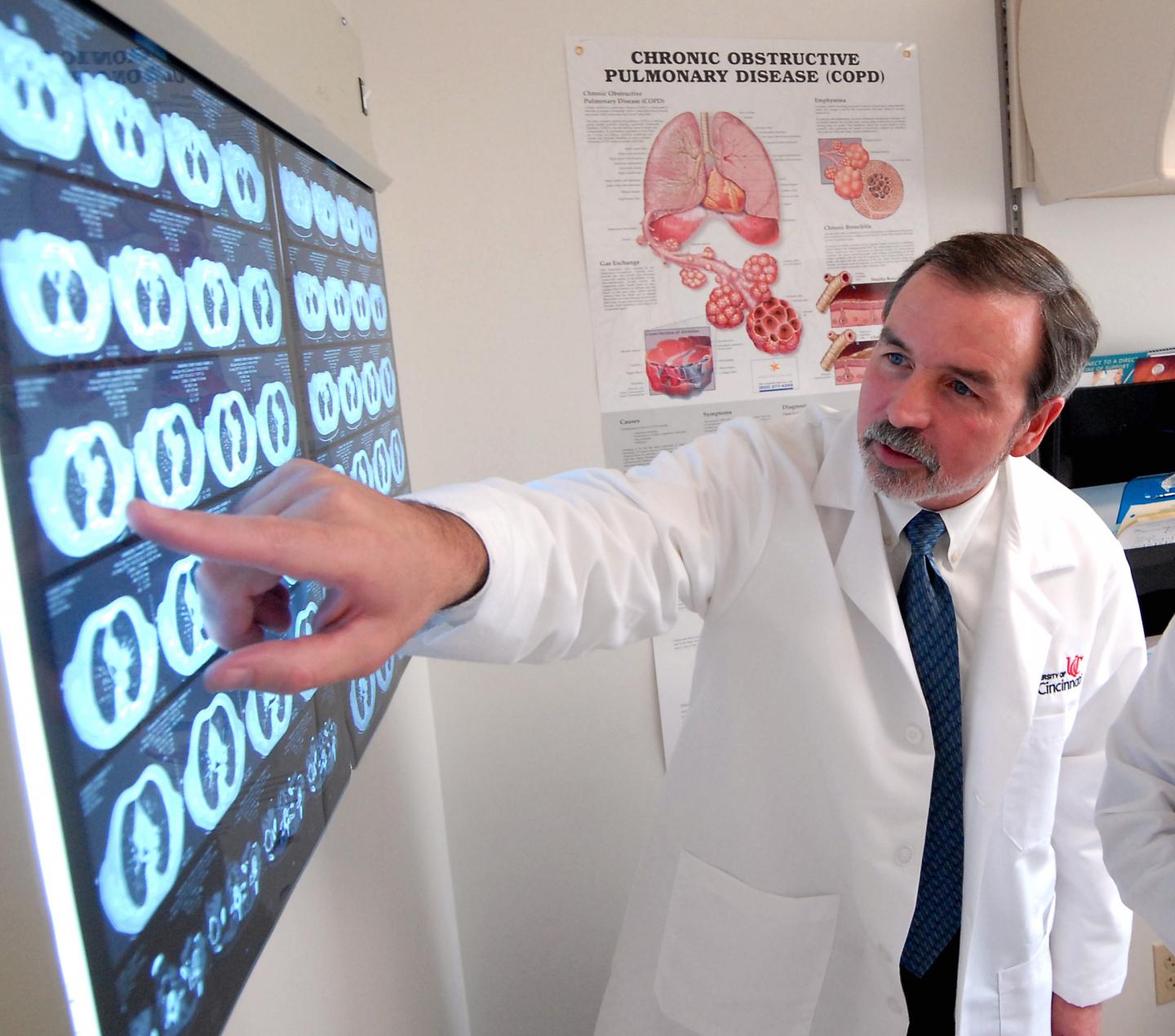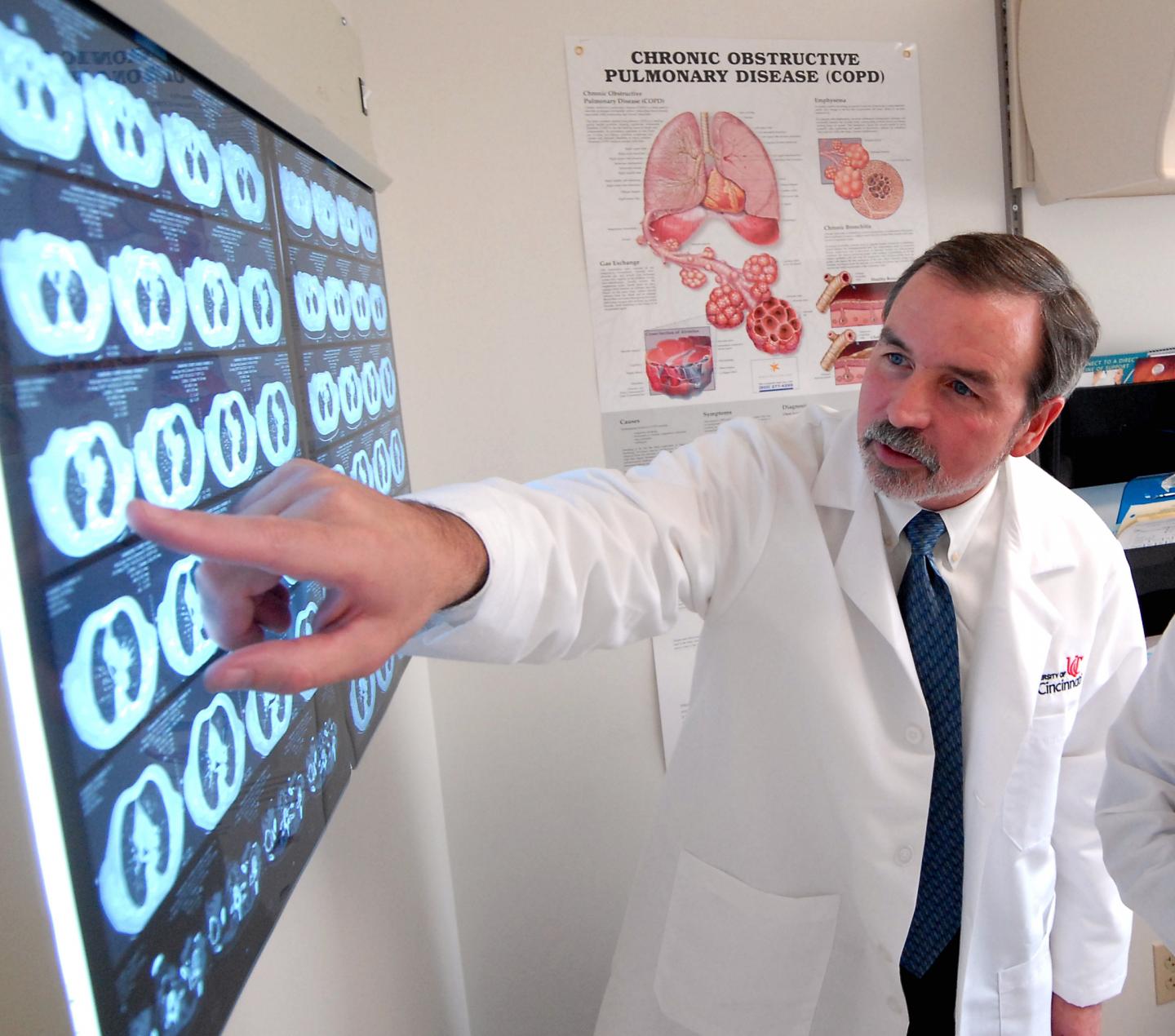
Credit: University of Cincinnati
CINCINNATI–Influenza is a recurring global health threat that, according to the World Health Organization, is responsible for as many as 500,000 deaths every year, most due to influenza pneumonia, or viral pneumonia. Infection with influenza most typically results in lung manifestations limited to dry cough and fever, and understanding how the transition to pneumonia occurs could shed light on interventions that reduce mortality. Research led by University of Cincinnati (UC) scientists takes a different approach to investigating how influenza spreads through the lungs by focusing on how resistant or susceptible cells lining the airway are to viral infection.
The work published today in the Proceedings of the National Academy of Sciences (PNAS) shows how stimuli that induce cell division in the lung promote spread of influenza from the airway to the gas exchanging units of the lung, known as the alveoli. The UC study also demonstrates that interventions that prevent alveolar cells from dividing reduce influenza mortality in animal models, suggesting a potential prophylactic and/or therapeutic strategy for influenza pneumonia.
"Almost all research into susceptibility or resistance to influenza focuses on host immune responses," says Nikolaos Nikolaidis, PhD, research scientist in the Division of Pulmonary, Critical Care and Sleep Medicine in the Department of Internal Medicine at the UC College of Medicine and lead author on the paper. "Our approach was to examine factors that influence the vulnerability of alveolar cells to influenza infection, separate from how the immune system is dealing with the virus."
"Less than 1 percent of alveolar cells are actively dividing at any given time in the healthy lung, rendering it naturally resistant to influenza infection," says Frank McCormack, MD, Gordon and Helen Hughes Taylor Professor of Internal Medicine and director of the Division of Pulmonary, Critical Care and Sleep Medicine and senior author on the paper. "Recovery from lung injury due to supplemental oxygen therapy, cigarette smoke or scarring lung diseases is associated with expression of growth factors that result in multiplication of lung cells. Our work demonstrated that these mitogenically stimulated cells are rich targets for influenza infection while they are dividing."
The researchers found that when sirolimus, which is FDA-approved for use as an anti-growth agent for the rare lung disease, lymphangioleiomyomatosis (LAM), was given to influenza-infected animal models, it prevented alveolar cells from dividing, and as a result, protected the mice from viral pneumonia and death.
"Although sirolimus also has off target immunosuppressive properties that could potentially pose added risks of side effects in virus-infected patients, trials of inhaled sirolimus could lead to approaches that do not entail systemic exposure," says McCormack.
The McCormack lab expressed optimism that this observation has the potential to ultimately inform understanding of other unexplained risk factors for influenza, including very young age and pregnancy, and perhaps even to change medical management, such as more judicious use of supplemental oxygen in patients admitted with suspected viral pneumonia. Further, the team has hopes that the research could lead to a paradigm shift in the approach to therapy.
Nikolaidis says the next step in this research is to further explore why the multiplying alveolar epithelial cell is a better target for influenza. "Is it because the virus gets into the dividing cell more easily, because multiplying stimuli expand the pool of cellular machinery used by the virus to replicate, or because proliferation is associated with a reduction in innate cellular defenses? We are anxious to explore these and other potential mechanisms of viral susceptibility," he adds.
###
Other UC investigators assisting Nikolaidis and McCormack include: Jason Gardner, PhD; Yasuaki Uehara, MD, PhD; Huixing Wu; Atsushi Saito, MD, PhD; Kara Lewnard; Huan Liu and Lori Pitstick.
Researchers not affiliated with UC include John (Greg) Noel of Shriners Hospitals for Children, and Mitchell White and Kevan Hartshorn, MD, of Boston Medical Center.
The research was funded by the National Institute of Allergy and Infectious Diseases (P01AI083222), the Center for Environmental Genetics (P30-ES006096), National Heart, Lung, and Blood Institute (HL069031) and the CareSpring Foundation.
McCormack has served as a consultant for LAM Therapeutics.
Media Contact
Bill Bangert
[email protected]
513-558-4519
@UCHealthNews
http://www.healthnews.uc.edu
Original Source
http://healthnews.uc.edu/news/?/29253/





